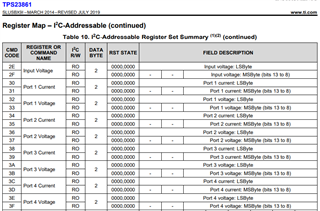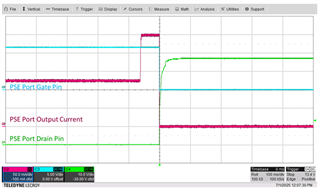Tool/software:
Hi Sir,
may we know some question as below:
1. Does the TPS23861 have a spread-spectrum feature for Power that can be optimized for EMI testing?
2. How can I read the current IEEE 802.3 at & af configuration of the MCU via I2C? Can I modify the settings myself?
3. How can I determine whether there is an OCP (Over-Current Protection) or OVP (Over-Voltage Protection) function?
4.What is the default standard that the LAN port will detect based on the MCU's preset configuration?
5. Currently our 10G PSE Sifos test fails at mark voltage min item of at mode. What does this part relate to? refer to the following file:





